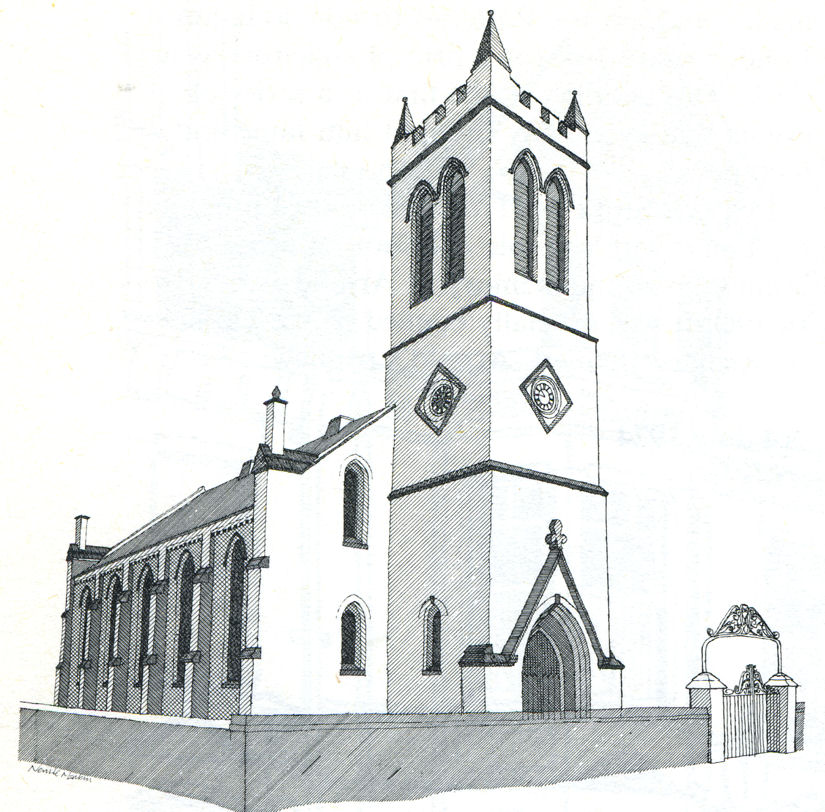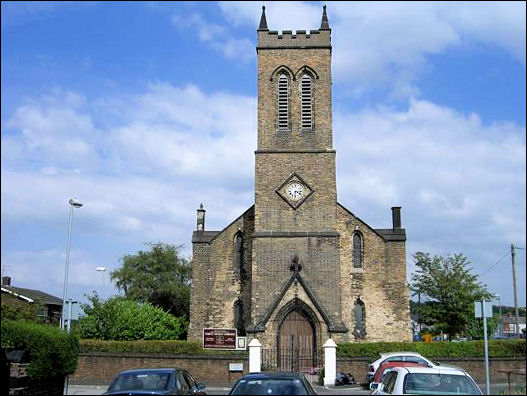|
|
|
![]() back to "The Grand Tour" index
back to "The Grand Tour" index
Neville Malkin's "Grand Tour" of the Potteries
buildings of
Cobridge
![]()
![]()
![]()
next: Little Sisters of
the Poor, Cobridge
previous: Bennett
home, Cobridge
contents: index of buildings outlying the town centres
|
No 54 - Christ Church, Cobridge
'Coberidge New Church,'
Artist: Thomas Peploe Wood. [Reproduced by permission
of the A parish consisting of Cobridge, Sneyd Green, and Abbey Hulton was created out of St John’s parish in 1844. The church is built of yellow brick in simple Gothic style and was designed by Lewis Vulliamy according to the Victoria County History (Vol VIII, p.124) and by L G Hales, a local brass founder, according to Pevsner. The church was enlarged and ‘beautified’ in 1845-6, and the chancel was extended in 1900. |

Christ Church, Cobridge
pen drawing by Neville Malkin -
April 1975

Christ Church, Cobridge
renovated in
2001
photos: Steve Lewin - July 2006
|
"In
a commanding position in Waterloo Road, Cobridge, stands the pleasant
building of Christ Church, constructed mainly of yellow brick with
stone pinnacles, caps and facings. Intended to accommodate 550, it was
erected in 1838-40 by L. G. Hales, a local brass founder, at an
estimated cost of £1,500. Most of the money was generously contributed
by the Rev. E. Whieldon, Rector of Burslem, and £700 by the
Incorporated Society and the diocesan church-building society.
The name Cobridge appears to have originated during the early 18th century and probably refers to its elevated position on a ridge. "Cob", in local dialect, meant "big", or a person of high standing. At one time the whole of this area was known as Rushton (Risctone) and joined with Hulton (Heltone) in the Domesday Survey, being then in the possession of Robert de Stafford. There appear to be very early ecclesiastical roots in this area because in 1223, Rushton, along with other estates in the vicinity that were the property of Henry of Audley, were given to the Abbott and monks of Hulton shortly after the foundation of their monastery. They continued to cultivate Rushton Grange until the dissolution of the Abbey in 1538. In 1539, Rushton Grange was granted by Henry VIII to James Leveson who sold it almost immediately to Richard Biddulph for £130 7s. Much of the land on the eastern side of Waterloo Road, then called Grange Lane, was gradually disposed of for various developments, but the Biddulph family retained most of the land on the western side until about a century ago."
|
![]() follow the route of the
monks from Hulton Abbey to Rushton Grange
follow the route of the
monks from Hulton Abbey to Rushton Grange
![]()
![]()
![]()
next: Little Sisters of
the Poor, Cobridge
previous: Bennett
home, Cobridge
contents: index of buildings outlying the town centres
back to "The Grand Tour" index